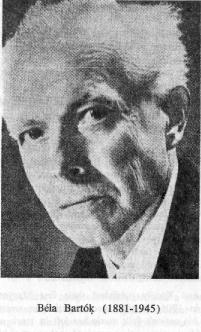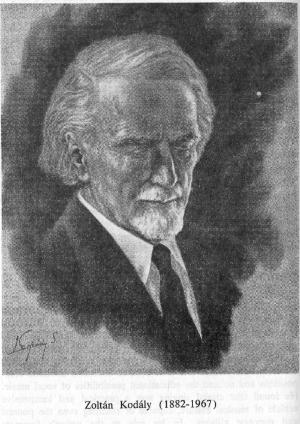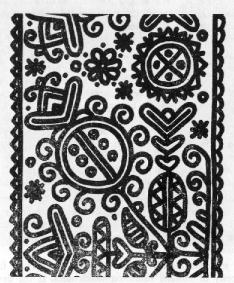| Timeless Nation |
24. HUNGARIAN RHAPSODY
(Hungarian music from Liszt to Kodaly)
Ferenc (Franz) Liszt
The life of this eccentric genius was as colourful as his music. Born in western Hungary (1811), he studied in Vienna and Paris. He became a concert pianist at the age of nine and in his teens became known in most European countries as an exceptional prodigy, the "Paganini of the piano". He then spent five years in Switzerland with his first mistress, a French countess, who bore him three children (one of them, Cosima, married Wagner)
During his frequent visits to the country of his birth Liszt became acquainted with the gypsy interpretation of Hungarian folk music. These popular melodies inspired his well-known "Hungarian Rhapsodies". He lived in the art-loving German principality, Weimar, for 15 years with his second mistress, a German princess. He became the official conductor of the court, the supreme musical authority, arbiter and critic, and the musical promoter of such young composers as Wagner, Berlioz and Weber.
In 1861 Liszt broke with his previous life style and had himself admitted to the Franciscan order. Ordained a Catholic priest, he gave up all worldly interests, except his music. Dividing his time between Budapest and Weimar, he helped to promote musical education in Hungary by founding the Academy of Music in Budapest of which he became the first president and professor. He died in 1886.
Liszt began his career as a piano virtuoso. His first compositions were little more than piano-arrangements of well-known works. He began to produce original compositions during his travels in the forties: his "Preludes" and "Symphonic Poems" (a musical form of his own creation) show romantic inspiration but he soon began to experiment with novel harmonies. His 15 "Hungarian Rhapsodies" also present a romantic interpretation of his country’s music. Though he failed to separate the genuine folk-music elements from the gypsy and urban ornamentation, the technical perfection, vivacity and flexibility of these compositions made them the most popular expression of "folkish" Hungarian music (especially the "Second Rhapsody’ – probably the best known Hungarian composition abroad) The last period of his activity – his musical maturity –produced novel harmonic and thematic structures, free from romantic influence. Many creations of this period herald a musical approach akin to twentieth-century modern music (Bartok). Liszt’s Hungarian themes – frequent in this period –discover the true folk-music interpretation, free from gypsy ornamentation or ballroom impressions. His great symphonic poem "Hungaria", composed in 1856 expresses Liszt’s own visionary interpretation of true Magyar music, his Magyar patriotism and European humanism. The cycles called "Years of Pilgrimage’ (especially the "Faust" and "Dante" symphonies) represent harmonies and musical concepts far ahead of his period - they are probably his greatest creations.
Liszt composed his "Coronation Mass" for the coronation of Francis Joseph and Elizabeth in Buda in 1867. Its somewhat melancholic, modern Hungarian music was little appreciated by Liszt’s contemporaries. His "Oratoria" show his relgious inspiration: best known are the "Legend of Saint Elizabeth of Hungary’ and the "Christus" oratorium. The "Csardas Macabre" one of his last compositions – is a hauntingly beautiful mixture of Magyar tunes inspired by Liszt’s preoccupation with death.
Romantic and popular music
The Hungarian composers of the period after the Compromise (1867) represented, with a few exceptions, neo-romantic, popular music trends, dominated by the demands of the unassuming middle-class tastes and Viennese bourgeois mediocrity. They did use Hungarian folkish melodic inspiration – the gypsy-ornamented operetta variety.
Karoly Goldmark (1830-1915) who was of Jewish extraction, studied in Vienna. His first works show marked Wagnerian inspiration, such as the opera "Queen of Sheba." His orchestral compositions, such as the "Rustic Wedding Symphony7’ show the inspiration of Magyar folk music and remarkably modern orchestration.
Similarly, Ede Poldini’s light opera, "Carnival Wedding", uses many Hungarian folk motifs in a rather Wagnerian frame.
The light-hearted operetta became the most popular form of musical entertainment of this era. Vienna, the "capital of the operetta", influenced the Hungarian composers of this genre at the beginning of their careers.
Imre Kalman (1882-1953) composed in Vienna, Paris and then, at the end of his life, in the U.S. He always emphasised his Hungarian roots and wished to be known as Hungarian. The Magyar popular tunes are noticeable in his most popular operettas, such as the "Gypsy Princess", "Countess Marica" and the "Circus Princess".
Ferenc Lehar (1870-1948), the best known of the Hungarian operetta composers, freed himself from Vienese influence at an early stage and created an individual type of operetta of a rather philosophical style, often melancholic, with themes ranging well beyond that of the popular operetta of the period. Lehar placed the plot of each operetta in a different country and attempted – with success in most cases – to recreate the musical atmosphere of that country. "Gypsy Love" was a gift to his native Hungary. The action of "The Merry Widow", "the most successful operetta of all times", is placed in the tiny principality of Montenegro, "Frasquita" in Spain, "Paganini" in Italy, "Frederica" in Germany etc. The Hungarian public’s favourite, "The Land of Smiles", places its romantic-melancholic plot in China.
Jeno Huszka (1875-1960), popular operetta and film-music composer, used many folk-inspired tunes in his compositions. His mellow, sweet, uncomplicated operettas, such as "Prince Bob" and "Baroness Lily", became very popular with the urban audiences in Hungary.
Pongrac Kacsoh (1873-1923) made his fame by composing the most popular operetta of Hungary: "John the Hero", based on Petofi’s folk-tale epic of the same title. Entirely unknown abroad, the operetta uses popular "Magyar song" inspiration in its pleasant, sentimentally-patriotic songs, the favourites of two generations.
Akos Buttykay and Pal Abraham represent more international styles. Abraham’s "Victoria and her Hussar" is better known in Germany than in Hungary.
The prosperous middle classes of Hungary at the turning of the century expected unpretentious, sentimental musical entertainment of a romantic-patriotic nature. This soothing, mellow music was presented to them by the popular operettas and by the so-called "Magyar song" of the period: gay or sad melodies usually presented by popular singers, accompanied by the ubiquitous gypsy orchestras. The combination of mellow song and gypsy music provided the urban audience with suitable moods to fall in or out of love, to forget or remember, to feel despondent or exuberant by. The moods created were flexible and the gypsy orchestras could easily be induced (for a slight consideration) to change the mood, rhythm and atmosphere at the whim of the audience. The melodies and texts of these popular "Magyar songs" were written and composed by urban song-writers (Pista Danko, Lorant Frater, Arpad Balazs and many others).
The search for a true Hungarian musical expression
Some XXth century composers demonstrated a more genuine and critical approach to a new Hungarian musical style. Their understanding and interpretation of Magyar music was deeper and their contribution to the development of an independent, folk-music inspired Hungarian music complemented and supported Kodaly’s and Bartok’s efforts.
Leo Weiner (1885-1960) presented Magyar folk music in its true nature ("Hungarian Folk Dances"). His not too numerous compositions bear witness to a refined musical culture and romantic charm ("Csongor and Tunde": inspired by Vorosmarty’s epic).
Jeno Hubay (1858-1937) was a violin virtuoso who became a professor, then director, of the Budapest Academy of Music. He had a great impact on Hungarian musical education between the Wars. He was a prolific composer with a refined taste and the ability to interpret Hungarian folk music themes in a pleasing, unpretentious style ("Csarda Scenes", "Lavotta’s Love"). Some of his operas and symphonies show Italian inspiration ("The Violin Maker of Cremona", "Dante").
Erno Dohnanyi (1877-1960), composer, piano virtuoso, professor and director of the Academy of Music, presents elegant, romantic themes in modern orchestration and melodic structures with a marked Magyar folk-music inspiration ("Ruralia Hungarica"). His ballet-pantomime, "Pierette’s Veil and his "Variations on a Nursery Song" are still popular concert pieces.
Bela Bartok
He was born in Transylvania in 1881. While studying at the Budapest Academy of Music, Bart6k became aquainted with Zoltan Kodaly and the two began studying and collecting Magyar folk music by travelling to remote Hungarian villages. Later Bartok extended his folk-music studies to other nations. For a while he was professor at the Academy, then gave up his chair in order to concentrate on composing and performing as a concert pianist. In the 1930s he and Kodaly were commissioned to collect, transcribe and edit the nation’s folk music. He went to the U.S. in 1940 and remained there during the war. He died in 1945 without returning to his homeland.
Bartok and Kodaly published their first Magyar folk-song collection in 1906. Bartok’s preoccupation in researching and evaluating his nation’s folk music has left its mark on his compositions: Magyar inspiration remained at the root of his otherwise original and unique creations. He wrote many arrangements, transcriptions and variations of folk themes. In many cases he rearranged the original melody and extended it into an original art form, at times by projecting the new style folk song back into an original, old type (pentatonic) structure. He also created music which was both his original composition and indistinguishable from folk music: the result of complete assimilation of folk culture, similar to Peto’fi’s "folk poetry".
This fusion of folk inspiration and his original genius created music which struck the audiences as harsh, even raw, ultramodern and certainly original. His simple basic themes were accompanied by disharmonic decoration. The result was a unique. Hard-to-understand philosophical music.
His compositions include a great number of piano solos and duos ("Mikrokosmos", "Allegro Barbaro"), several piano concertos and piano sonatas. His string quartets are said to be "the most important contribution to chamber music since Beethoven" (Sir Malcolm Sargent). Orchestral compositions, such as "Music for Strings, Percussion and Celesta" and "Divertimento" are among his most often performed works.
Bartok’s only opera, Prince Bluebeard’s Castle" is based practically on two solos and is therefore very difficult to perform. The two ballets, "The Wooden Prince" and "The Miraculous Mandarin", are more often seen.
Bartok was a true Hungarian humanist: his love for his nation blended with his love for all his fellow humans. He appreciated the art of people everywhere and he gained his inspiration from the folk music of the neighbouring Central European peoples as well as from folk cultures of other continents. His musical expression, built on themes of eastern inspiration used western harmonies in a classic synthesis of East and West.

ZoItan KodaIy
Kodaly was born at Kecskemet, in the heart of the Great Plain (1882). During his student years at the Budapest Academy of Music he began studying and collecting Magyar folksongs with Bela Bartok. His career as a composer began in 1906 with a work of Hungarian folk inspiration. He was professor of the Academy for a long time but continued his folk-music research. After World War I he became interested in choral compositions and noticed the educational possibilities of vocal music. He found that choral singing was a practical and inexpensive vehicle of musical culture, capable of reaching even the poorest and remotest villages. In his role as the nation’s foremost musical educator, Kodaly realised the cultural importance of the study, identification and evaluation of true Magyar folk music. The Hungarian Academy of Sciences has co-ordinated and financed the task of folk-music collection since the 1930s. Thus today the "Folk Music Research Institute" of the Academy possesses the recordings of some 100,000 folk melodies.
Kodaly expounded his educational principles and folk music evaluations in scores of articles and books. He died in Budapest in 1967.
His rich collection of choral works includes the "Szekely Spinnery", a colourful operatic tableau of Szekely songs and ballads (1932), the various collections of regional and children’s songs and dances with or without orchestral accompaniment ("Matra Pictures", "Kallo Double Dance" etc.) and the numerous religious folk songs, along with his original choral compositions to classic Hungarian poetry.

In his orchestral compositions Kodaly retains the traditional melodic elements, such as the popular "toborzo" ("verbunk") type motifs. His "Dances" are collections of orchestral variations of regional dances ("Galanta", "Marosszek"). The "Peacock Variations" present an orchestral paraphrase of an old folk song.
Among his more original and individual creations, the "Psalmus Hungaricus" (1923), a choral oratorio based on a XVIth century Hungarian psalm, established his reputation in Hungary, while ‘Hary Janos", a; comic opera based on the tales of a village story-teller (1926), became the favourite of national and international concert programmes, especially the "Hary Janos Suite", with its pleasing, emotional rhythms and folk-music inspired melodies. The "Concerto for Orchestra" (1939) is, in its more abstract form, a modern symphonic treatment of Magyar folk tunes. Kodaly’s last orchestral creation, "Symphony" (1961) constitutes practically an apotheosis of the Magyar folk song.
Kodaly treated many religious themes often connected with Hungarian historical events, such as the "Budavar Te Deum" (1936) on the anniversary of Buda’s liberation from the Turks and the "Missa Brevis", composed during the capital’s siege by the Russians in 1944.
The so-called Kodaly method (Kodaily concept), is the basic philosophy of musical education which aims at the developing of the very young (pre-primay) child’s musical ability by using singing as the first activity with solmization (solfege) as the vehicle of vocal music teaching. This musical "alphabet" (solfege) is impressed into the child’s memory by hand signals and then by visual notation. The content of the first exercises is the Magyar folksong (this "classical music par excellence", as Kodaly put it). This awakens the child’s musical imagination and enables him to distinguish the separate tones of the pentatonic and, later, the western scales. Kodaly’s emphasis on early musical education reaches back to the classic Greek concept of the educational importance of music. Thus the "Kodaly concept" becomes a universal, classic-humanistic educational principle, easily adapted to any national education system, as is the case in many advanced countries today.

| Timeless Nation |